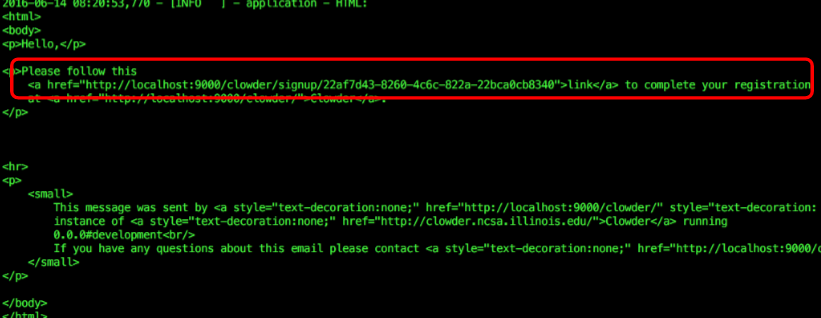...
The easiest way to get a local Clowder instance up and running is via Docker. We have created a docker image with the full Clowder stack already installed:
...
- Install Docker and download our docker-compose.yml file from GitHub. This file tells Docker how to fetch and start the component containers for Clowder and its dependencies.
- From a docker-aware terminal, go to the directory where you put the .yml file and run
docker-compose up. This should start Clowder and its components. - Now you need to determine which IP address Docker is running on.
- Docker's Networking documentation shows how to use
docker network lsandifconfigto determine Docker's IP address. - Older installations that use docker-machine may need to use
docker-machine ip.
- Docker's Networking documentation shows how to use
- You should be able to now access Clowder at
<dockerIP>:9000.
You can also access the RabbitMQ management console at<dockerIP>:15672. - Finally, sign up for a local account in Clowder. Because we have not configured an email server, no confirmation email will be sent - however we can get the confirmation URL from the Clowder logs:
docker psto list running Docker containersdocker logs <clowder container name>to see the logs for your Clowder container- Look for a block of HTML in the log that is the body of the unsent email:
- Copy the link into your browser to activate your account. For example in the screenshot above you would visit:
http://localhost:9000/clowder/signup/22af7d43-8260-4c6c-822a-22bca0cb8340
Install pyClowder 2
Writing an extractor
...
